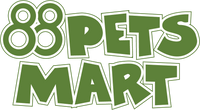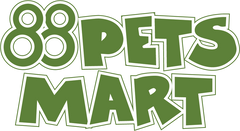
如何正确帮狗狗梳毛 (上篇) | How To Brush Your Dog’s Hair Correctly (Episode 1)
Do you know what’s the right way to blow-dry your dog after a shower? And how to brush your dog’s hair during the blow-drying?
After a shower, we can use a power blower and a hair dryer to blow-dry your dog’s hair. Start with using the power blower first because it is efficient in blowing water away from the fur, then followed by the hair dryer. Beware of the high temperature and hold it not too close to the body, so that the skin is not hurt by the heat. We can start from the hind leg, then move forward to the back and front part of the body, and finally the head. The inner thigh is often neglected during the blow-dry process so take note to not forget that area.
Most dogs do not like it when you blow-dry their face and the surrounding area. So we can turn the blower or hair dryer to a lower intensity at these sensitive parts. The parts of the ear are usually harder to blow-dry too because some dogs hate it when strong gust of air is being blown into their ears. To help ease this discomfort, you can try blocking the entrance of the ear hole with your thumb.
How can I make my dog’s hair fluffy when blow-drying?
If you want the coat to have a fluffy effect, once your dog’s hair is about 70 – 80% dry, you can use a slicker brush to brush while blow-drying at the same time. Use the slicker brush to brush and lift the fur up by the roots, according to the hair growth’s direction, and point the hair dryer underneath the hair. Brush and blow-dry in small areas, section by section, and move the hair dryer following the direction to make sure you don’t miss any parts. You can consider getting a stand for your hair dryer too, so that it’s more convenient to adjust the blowing movement and position.
How can I make sure that my dog’s entire coat is brushed completely?
For fur that’s around the eyes, you can brush the area with a metal comb (refer to the video), which is much safer. After you’re done, use a metal comb to run through the whole body as a final check. If there’s any tangled hair that’s not been fully brushed or is matted, the metal comb won’t be able to comb through it. You will need to continue using the slicker brush to brush again, until the metal comb can go through the whole body’s coat smoothly.
Is it true that long-haired dogs shed more than short-haired dogs?
There’s a common myth that long-haired dogs shed a lot. Many people opt to have a short-haired dog as a pet because they assume that it would shed less. In fact, hair shed is not dependant on the length of a dog’s coat; the main factor of hair shed is the type of coat.
In general, there are 3 types of dog coats.
Dog hair: This type closely resembles human hair, whereby the hair grows continuously and it tends to shed less frequently. However, this coat type requires more frequent brushing to avoid tangles and matted hair. Dogs with hair include the Poodle, Maltese, and Schnauzer.
Dog fur: This type mostly can be found in shorted-haired dogs, whereby the fur’s hair growth cycle is a lot quicker and therefore they lose and re-grow their hair much quicker. Dogs with fur include the French Bulldog, English Bulldog, Pug, Beagle, and Jack Russell.
Double coat: This is when the top coat is normally longer and coarser, while the inner coat is shorter, thick and soft. The outer coat is also weather and water resistant. Dogs with double coats include the Pomeranian, Chow Chow, Husky, and Corgi. Their hair growth cycle usually restarts every 6 months, and so they shed every 6 months. If we do not brush their hair properly and frequently, once they enter the shedding season, hair fall can be overwhelming.
In the next episode, we’ll talk about the correct way to handle the tangled hair and hair shedding.
Hope these little tips help, especially for new pawparents!




